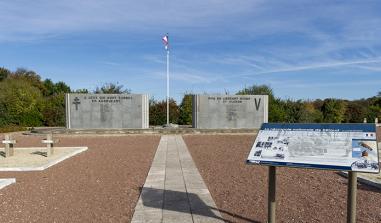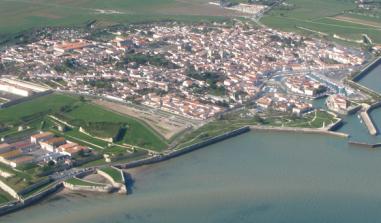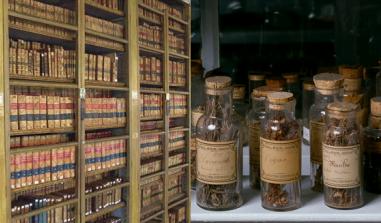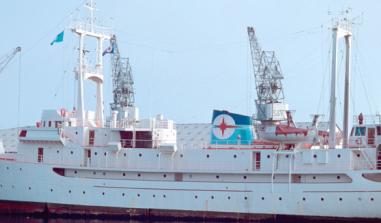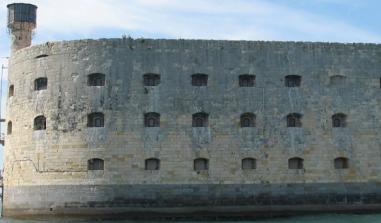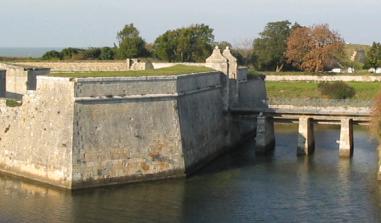National Naval Museum in Rochefort
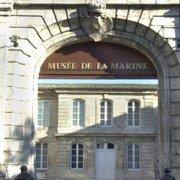
The Dédaigneuse, a frigate with 12 canons, Louis XV era. Source: MnM/P.Dantec/A Fux
This museum is a key element in understanding the maritime heritage of the Rochefort area. It is the only one to possess the heritage collections that enable it to create a wide-ranging insight into the history of the naval shipyard.
The National Naval Museum is a key element in understanding the maritime heritage of the Rochefort area. Out of all of the local organisations involved (SHM, Town of Rochefort, CIM, Hermione, etc.), it is the only one to possess the heritage collections that enable it to create a wide-ranging insight into the history of the naval shipyard. A museum that concentrates on significant objects, steeped in history, it plays a vital role as a centre of information about the naval shipyard of Rochefort, a strategic property and State factory.
Background History The Hôtel de Cheusses: A building at the heart of the history of Rochefort The National Naval Museum in Rochefort is located in the town's oldest civil building, the Hôtel de Cheusses. The Hôtel de Cheusses was involved in all the major events in Rochefort. Historically it is the only building, along with the church of the Vieille Paroisse, capable of conjuring up a picture of Rochefort before 1666, the date when the naval shipyard was built. The seat of local power, first military and then later administrative, it was at the heart of the industrial, economic and military system that the shipyard represented until it was decommissioned in 1927. Having inherited the collections that are testimony to the operation of this shipyard, it began a slow move to appropriate and display this maritime heritage, which blossomed in the 1980's and which constitutes the central image of Rochefort today. A home In 1594, Henri IV gave the governorship of Rochefort to his first valet, Adrien de Lauzeré, whose grand daughter married Henri de Cheusses, the last Lord of Rochefort who gave his name to the "château". It is the oldest civil building in the town. The founding of the naval shipyard in 1666 drove away Henri de Cheusses. The building was seized and completed with a wing to the south to create a classic U-shaped stately home. Between 1690 and 1927, the Hôtel de Cheusses was successively the home of the Commander of the Navy, the Bursar and then the Naval Commissioner. Being used as accommodation as well as an institution, it was designed to be a place of hospitality and prestige. A naval museum Listed as a Historic Monument in 1932, the Hôtel was at the centre of Rochefort's first considerations about its heritage. The Hôtel de Cheusses was chosen to accommodate the collections from the model room kept at the shipyard, thanks to the actions of Dick Lemoine, the port's archive curator. This first naval museum opened in 1936. Closed in 1940, the collections were put in boxes and broken up without a great deal of care. A first attempt to bring them back failed in 1948 because of the poor condition of the building. Until 1959, it was used by various administrative departments. In 1960, a new attempt to reopen revealed the structure to be worn away by termites. A coordinated plan was required for its restoration. It finally opened to the public in 1974. Property of the National Naval Museum since 1978, it underwent major redevelopment in 1993.
Collections and Displays The historic monument that houses the museum makes its own mark on the route taken by visitors. Covering 600 m², the way the museum is laid out brings the objects to life, enabling understanding of their meaning and importance and revealing their beauty in the place's own special atmosphere. The itinerary is devoted to the history of the shipyard and naval construction. Visitors are transported away on a journey of the imagination, learning all about the construction (the techniques and decorative details of the ships), the reasons for constructing (political, military and scientific) by whom the construction was carried out (the life of the shipyard), where construction took place (the development of the shipyard) and the materials used in construction (the economy, supplies etc.) Once past the reception area, the squadron leaders' room, still with its 18th century wooden cladding, conjures up the history of the museum and the building that houses it. The following room illustrates the nature of the warship, a powerful artillery deck, with its complex requirements, the construction of which is a matter of collective pride: the model of the Comte d'Artois, a powerful vessel with 110 canons, is a magnificent example. The penal colony, a concentration-like system set up for the shipyard's manpower requirements, is called to mind there. Naval construction is then covered through models of shipyards, masterpieces of the scale model-making of the 18th and 19th centuries. The vital infrastructures are displayed, showing the shipyard as a technical area continually seeking innovation.
Next comes a large room that displays some outstanding insights into life at the Rochefort shipyard, demonstrating three aspects of it: the training of future officers with a model of the Royal, the preservation of maritime heritage with the capstan the Implacable, formerly the Duguay-Trouin, and the technical innovation with the two mills for dredging and sawing. In the first room upstairs there is a display with a model of the Dédaigneuse, a 12 frigate built in Bordeaux in 1766 and similar to the Hermione. Paintings of a series of views of the Amérique warships, commanded by Louis XVI at Rossel de Cercy complete the picture. Of particular note is the only known portrait of the Hermione.
Next is the bedroom of the Commander of the Navy, which looks out onto the shipyard and the dry docks and allows us to admire models of ships from the beginning of the 19th century. On the second floor the room dedicated to the art of naval sculpture conjures up a picture of the shipyard's model workshop and sculpture room. The industrial era is then evoked through the major developments from sail to steam and from wood to iron that constituted a time of experiments, trials, daring and continual reappraisal, in which the Rochefort shipyard fully participated. The form of ships fluctuated between the rational and scientific fancy, as demonstrated in some of the centrepiece models of weapons. Lastly, in the weapons room is a display of canons, carronades, howitzers, gun carriages and cannonballs, as well as hand weapons, swords and battle axes, reminding us of the violence of armed combat. Rare and even unique objects show the technicality and beauty of navigational instruments and the harshness of life on board.
Rochefort National Naval Museum 1, place de La Galissonnière 17300 Rochefort Tel.: + 33 (0) 5 46 99 86 57 Fax: + 33 (0) 5 46 87 53 27 Opening times In winter: from 1st October to 30th April Every day from 1.30 pm to 6.30 pm In summer: from 2nd May to 30th September Every day from 10 am to 8 pm Closed annually on the 1st May, 25th December and from the 1st to the 31st January inclusive Charges Full price: 5 € Reduced rate: 4.20 € Defence personnel: free Under 18's: free The book and gift shop is open during the museum's opening hours Getting there Rochefort-Saint Agnant Airport Rochefort Railway Station TGV to Surgères and SNCF bus service or change at La Rochelle A10 Motorway from Paris to Bordeaux, taking the Surgères or Saint-Jean-d'Angély Rochefort exit: follow signs for town centre
Collections and Displays The historic monument that houses the museum makes its own mark on the route taken by visitors. Covering 600 m², the way the museum is laid out brings the objects to life, enabling understanding of their meaning and importance and revealing their beauty in the place's own special atmosphere. The itinerary is devoted to the history of the shipyard and naval construction. Visitors are transported away on a journey of the imagination, learning all about the construction (the techniques and decorative details of the ships), the reasons for constructing (political, military and scientific) by whom the construction was carried out (the life of the shipyard), where construction took place (the development of the shipyard) and the materials used in construction (the economy, supplies etc.) Once past the reception area, the squadron leaders' room, still with its 18th century wooden cladding, conjures up the history of the museum and the building that houses it. The following room illustrates the nature of the warship, a powerful artillery deck, with its complex requirements, the construction of which is a matter of collective pride: the model of the Comte d'Artois, a powerful vessel with 110 canons, is a magnificent example. The penal colony, a concentration-like system set up for the shipyard's manpower requirements, is called to mind there. Naval construction is then covered through models of shipyards, masterpieces of the scale model-making of the 18th and 19th centuries. The vital infrastructures are displayed, showing the shipyard as a technical area continually seeking innovation.
Next comes a large room that displays some outstanding insights into life at the Rochefort shipyard, demonstrating three aspects of it: the training of future officers with a model of the Royal, the preservation of maritime heritage with the capstan the Implacable, formerly the Duguay-Trouin, and the technical innovation with the two mills for dredging and sawing. In the first room upstairs there is a display with a model of the Dédaigneuse, a 12 frigate built in Bordeaux in 1766 and similar to the Hermione. Paintings of a series of views of the Amérique warships, commanded by Louis XVI at Rossel de Cercy complete the picture. Of particular note is the only known portrait of the Hermione.
Next is the bedroom of the Commander of the Navy, which looks out onto the shipyard and the dry docks and allows us to admire models of ships from the beginning of the 19th century. On the second floor the room dedicated to the art of naval sculpture conjures up a picture of the shipyard's model workshop and sculpture room. The industrial era is then evoked through the major developments from sail to steam and from wood to iron that constituted a time of experiments, trials, daring and continual reappraisal, in which the Rochefort shipyard fully participated. The form of ships fluctuated between the rational and scientific fancy, as demonstrated in some of the centrepiece models of weapons. Lastly, in the weapons room is a display of canons, carronades, howitzers, gun carriages and cannonballs, as well as hand weapons, swords and battle axes, reminding us of the violence of armed combat. Rare and even unique objects show the technicality and beauty of navigational instruments and the harshness of life on board.
Rochefort National Naval Museum 1, place de La Galissonnière 17300 Rochefort Tel.: + 33 (0) 5 46 99 86 57 Fax: + 33 (0) 5 46 87 53 27 Opening times In winter: from 1st October to 30th April Every day from 1.30 pm to 6.30 pm In summer: from 2nd May to 30th September Every day from 10 am to 8 pm Closed annually on the 1st May, 25th December and from the 1st to the 31st January inclusive Charges Full price: 5 € Reduced rate: 4.20 € Defence personnel: free Under 18's: free The book and gift shop is open during the museum's opening hours Getting there Rochefort-Saint Agnant Airport Rochefort Railway Station TGV to Surgères and SNCF bus service or change at La Rochelle A10 Motorway from Paris to Bordeaux, taking the Surgères or Saint-Jean-d'Angély Rochefort exit: follow signs for town centre
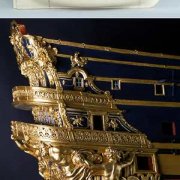
Le Dauphin Royal. © MnM/P.Dantec/A Fux
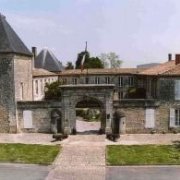
Musée national de la Marine à Rochefort. © DR
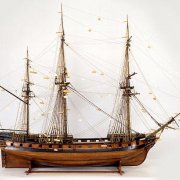
La Dédaigneuse, frégate de 12 canons, époque Louis XV. © MnM/P.Dantec/A Fux
> Return to results
Practical information
Address
1 place de La Galissonnière 17300
Rochefort
Tél. : 05 46 99 86 57 Fax : 05 46 87 53 27
Prices
Plein tarif: 5 € Tarif réduit: 4,20 € Gratuit : Personnel défense, moins de 26 ans
Weekly opening hours
Octobre à avril: de 13h30 à 18h30. Mai et juin: de 10h à 18h30. Juillet à septembre: de 10h à 20h
Fermetures annuelles
Fermé en janvier, le 1er mai et le 25 décembre


